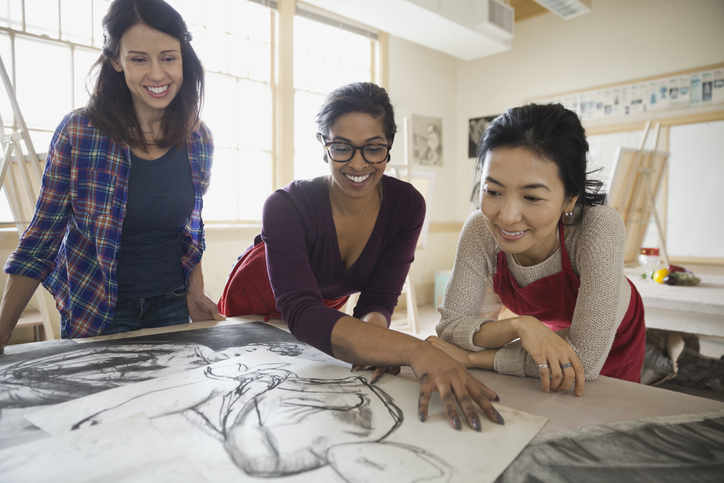It might seem a little counter-intuitive to say this, but women also make art.
There have been so many prolific female artists in history: Frida Kahlo, Georgia O’Keeffe and Dorothea Lange all come to mind. However, in a typical art history class, it’s a little disturbing to see that despite the millions of women in the past and present who made beautiful artwork, art history exams still prominently feature men’s artwork. That’s not to say that men can’t compose beautiful art, but rather, speaks volumes about how underappreciated many women artists are.
The United Kingdom-based Freelands Foundation recently published some research regarding how the art world regards women artists. Despite saying that 62 percent of art school students in the U.K. were women, only 31 percent of represented artists in commercial galleries cultivated across London were women. Odd, right? While 42 percent of people who put on solo shows in London art galleries were women, it drops down to 25 percent when thinking about major galleries.
In fact, going by these statistics, you’re probably more likely to see a woman as the subject of artwork rather than as the creator.
It’s not much better in the United States; only 27 percent of artists in the U.S. who were able to put on major solo shows were women from 2007 to 2013. “It’s not primarily about saying, ‘Let’s have equality for female artists’—it’s a way to make an interesting programme,” Daniel Birbaum, director of Sweden’s Moderna Museet in Stockholm and Malmo, said to the Art Newspaper.
Women’s art collectives and philanthropists interested in bringing diversity to the arts are making great leaps in changing the landscape of the modern art world. Australia’s The Ladies Network features all art made by women, highlighting up-and-coming artists in blog posts and calendars of all upcoming events. The international art collective World Wide Women does something similar by constantly bringing together international artists in curated exhibits and offering opportunities at places around the world.
Art philanthropist Valerie Napoleone created the eponymous Valerie Napoleone XX (named after the chromosomes of the female sex) in 2015 to curate a collection of women artists. Napoleone has said that she works to avoid dismissing the talent of women who have been historically under-looked in the art world.
Things change at established art institutions as well. As noted by many, the Tate Modern museum in London is now headed by a woman, who many hope will make a difference in the distribution of artists brought to one of London’s biggest museums.
While historically, the “greatest” artists have been only men, it is the work of very many to see that change. The greatest can also be women, and the art landscape is slowly parting to truly reveal the extent of that.




comments